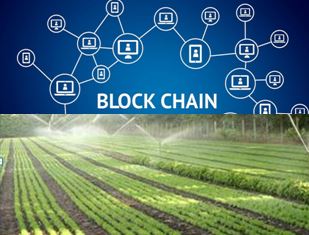E. coli outbreak in lettuce- Can blockchain Traceability Change the Recall Process?
Two outbreaks of lettuce infected with E. coli: source not found
In the last several months two outbreaks related to romaine lettuce were reported.

First Outbreak: The first outbreak was announced on December 11, 2017, by the Public Health Agency of Canada (PHAC), involving 21 STEC O157:H7 infections in three provinces linked to romaine lettuce.
The CDC PulseNet (the national subtyping network of public health and food regulatory agency laboratories), identified a cluster of five STEC O157:H7 infections in the United States. (CDC ) Whole Genome Sequencing showed that the cases in both countries were genetically closely related.
In the US 25 people were infected with the outbreak strain in 15 states. The source of the outbreak was not identified to a specific type of leafy greens.
The second case: This outbreak got much public attention. According to the CDC as of May 16, 2018 outbreak strain of E. coli O157:H7 caused 172 confirmed cases of illnesses in 32 states, 75 people have been hospitalized, 20 with hemolytic-uremic syndrome (HUS), and one death. There were also six illnesses reported in Canada due to this strain. The romaine lettuce was never recalled, but at a certain point, the CDC advises consumers not to eat romaine lettuce unless they are confident it does not come from the Yuma, AZ. The CDC recommends to restaurants not to serve romaine lettuce unless they are sure its source is outside the Yuma area. The advice not to consume romaine lettuce from Yuma came late after the bulk of the outbreak was over.
Consumers Letter to Dr. Gottlieb FDA Commissioner Requesting Faster Traceability of Leafy Green
As a result of the two unsolved leafy green outbreaks, 9 consumer and food safety groups (Center for Foodborne Illness Research & Prevention; Center for Science in the Public Interest; Consumer Federation of America; Consumers Union; Food & Water Watch: National Consumers League; The Pew Charitable Trusts; STOP Foodborne Illness; and the Trust for America’s Health.) send a letter to the FDA Commissioner Scott Gottlieb demanding to add regulations within the next six months “for comprehensive and rapid traceability of produce, including leafy greens.” In the letter, they claim that current records-keeping result in “tangled web of inconsistent and inadequate” information for those tracking outbreaks. “The repeated outbreaks linked to produce and leafy greens since passage of FSMA leave no doubt that these products belong in the “high-risk” category.
Leafy greens are responsible for more cases of E. coli illness than any other produce, the group noted.
They continue “Current technology makes it possible for retailers to track and trace products with extraordinary speed and accuracy. Retailers using advanced technology, such as blockchain, now report they can identify the origin of certain produce shipments in as little as 2.2 seconds…it is no longer acceptable that the FDA has no means to swiftly determine where a bag of lettuce was grown or packaged. It is no longer acceptable that the FDA has no means to swiftly determine where a bag of lettuce was grown or packaged.” The 2.2 seconds comes from a Walmart study with mangoes and suggests blockchain as the solution. Frank Yiannas, VP of food safety in Walmart said: “The romaine incident is a perfect example of a real-world scenario where if tools were available it might be managed a bit more effectively.” Yannas believe that blockchain could have lead investigators to the source of contamination.
Is blockchain the solution to the problem?
What does Blockchain offer?
Blockchain technology offers secure data transactions helping the food supply chain transparency and traceability with one technology. Its distinct feature is its assurance of data integrity, which makes the records trustworthy.
Each entry is logged into a worksheet in sequence as it is entered, and it is checked and validated against specifications that have been programmed into the system. After some entries have been validated, they are entered into an individual time-stamped worksheet as a “block” of verified data. The worksheet is digitally “locked” to prevent any further additions or changes to the record. These verified blocks of data are linked to form a chain of worksheets (i.e., records) that cannot be altered
Status of blockchain technology: experiments done to date
Walmart brought blockchain to the attention of the food industry when it conducted a trial with sliced mangoes. Partnering with IBM, Dole and Driscoll’s, and using bar-coding technology, they showed how the system could improve food safety by speeding up food recalls and increase operational efficiencies. Walmart was able to trace the mangoes at every point and access product data that took 18 hr and 22 sec — in just 2.2 seconds.
Cargill created a blockchain-based system that allowed consumers to trace, a limited number, of Honeysuckle turkeys from farm to table. They used the technology to create a transparent digital trail of farm-to-store. The system allowed the buyers to enter a package code on their computers to access a website where they could learn more about the farmer and family farm where the turkey was raised. Carrefour the French grocery chain, launched the first European food blockchain to trace and track the production of its free-range Quality Line Auvergne chicken products. The grocery chain also plans to extend its blockchain program to include hamburgers, among other products, by the end of 2018.
TE-Foods in partnership with partnered with HALAL TRAIL are using blockchain to ensure halal food, and provide food traceability and quality verification services for the sector. They plan to initiate two pilot projects in June 2018 track chickens and lambs in Lancaster, Tunbridge Wells & Manchester, U.K. as a reference to be implemented globally.
Foodshed.io is utilizing blockchain to enhance traceability for local suppliers (within 250-mile radius) and connect them with chefs, supermarkets, and institutional buyers. Farmers can use the platform to access local urban markets and respond to opportunities. The platform allows streamlining and aggregation of inventory from multiple farms, thereby creating an efficient, reliable and transparent market where buyers can place all of their orders. The use of blockchain by Foodshed.io platform allows to optimize routes and update in real-time the data. This benefits farmers, buyers, and consumers from the more localized economy.
These examples show that some companies are testing the application of blockchain technology for the food industry. While there is lots of buzz around the technology, it is important to remember that the technology is in its infancy.
Unique problems with leafy greens
As the lettuce grows in the field, it can be subject to contamination by birds, domestic and wild animals. Such contamination is uneven. In the harvesting step sanitary conditions of the workers can contribute to the contamination. The boxed lettuce is loaded on a truck in many cases; the truck carries boxes from several farms, complicating the tracking. In the processing plant, the lettuce gets mixed. The process does not stop necessarily between farms. Further mixing of the lettuce happened when it gets cut and washed. Therefore in the finished bag, there might be pieces of lettuce from more than one farm.
“To say to consumers that you shouldn’t be consuming romaine lettuce if it came from the Yuma area and yet that information at the point of consumption or the point of purchase isn’t readily available or obvious to the consumer, then that’s a problem,” said Stephen Ostroff, deputy commissioner for food and veterinary medicine at the U.S. Food and Drug Administration.
Conclusions
Blockchain technology is a promising technology. It can speed up food recalls and allow for information transparency needed. However, it is important to mention that the technology is in its infancy and might take 5-10 years to mature. There are essential building blocks that must be in place before blockchain implementation
The reduction in food recall time from months to minutes can be achieved after food traceability is in place. First, all supply chain partners harmonize data collection. The biggest hurdle for blockchain will be getting companies throughout the supply chain on board, said Markon CEO and Center for Produce Safety chairman Tim York.
